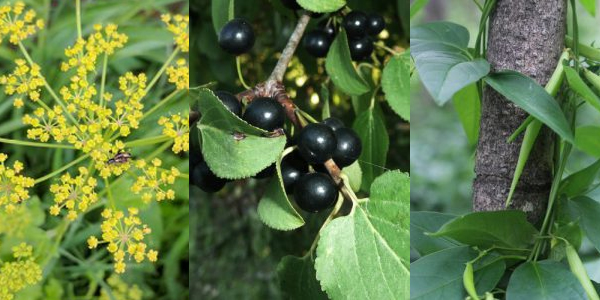Community-based approach considered for tackling noxious weeds
Administrator | Aug 24, 2022 | Comments 1

Noxious weeds formed a good part of the discussion at the Agricultural Advisory Committee’s meeting last month, in what was the last meeting for the group in this term of council.
On Tuesday evening, council approved moving forward with the Agricultural Advisory Committee’s recommendation that staff work with the Agricultural Advisory Committee and the Environmental Advisory Committee to conduct research and develop a community-based approach to deal with noxious weeds, to include public consultation.
Of main concern is European buckthorn and wild parsnip, also dog strangling vine, where all three appear on the provincial list of noxious weeds.
A noxious weed is typically a plant listed in the schedule of noxious weeds under the Weed Control Act, known as the noxious weeds list.
Generally speaking, a species designated as a noxious weed under the Weed Control Act is one that is difficult to manage on agricultural land once established, and will reduce the yield and quality of the crop being grown, according to the government website.
Noxious weeds also negatively affect the health and well-being of livestock, or pose a risk to the health and well-being of agricultural workers.
European buckthorn, introduced as an ornamental shrub, is poisonous to human as the bark and fruits contain chemicals that have a strong purgative action that can affect humans, according to the government website.
It is commonly found in fence rows, pastures, woodland and abandoned areas where seeds are widely scattered by birds.
Wild parsnip produces sap-containing chemicals that can cause human skin to react to sunlight, resulting in intense burns, rashes or blisters. The invasive plant spreads quickly and can form dense stands at 1.5 metres tall spreading quickly in disturbed areas.
Its seeds are easily dispersed by wind and water, as well as equipment such as mowers. Remarkably, it belongs to the carrot family.
Dog-strangling vine (also known as European swallow-wort) is spreading in Ontario at an alarming rate. While it doesn’t strangle dogs, it can strangle out other plants by twisting, twining and entangling them, especially native plants, destroying natural habitats.
It is a member of the milkweed family where its leaves resemble milkweed foliage.
The advisory committee discussed the provincial list of noxious weeds where it was noted both European buckthorn and wild parsnip have become significant issues in the County as they grow at a rapid rate once introduced.
It was noted seeds are light and spread easily, travelling on the prevailing winds into bush lands and fields.
“Birds, particularly the large murders of crows prevalent in the County, spread the seeds rampantly, and seeds blow off farm trucks when transporting goods via the major transportation routes, evidenced by the significant infestation along the highways.”
Because plants grow two to three feet high in a single year, it was noted by the committee that there is a significant cost to farmers having to re-plough and/or re-till fields.
The human health hazard, as well as harm to other species, was also noted as a concern.
Some of the other weeds on the list of noxious weeds include coltsfoot, ragweed, dodder, giant hogweed, serrated tussock, poison ivy, and wild chervil among them.
While all 22 noxious weeds on the provincial list cannot be addressed in one go by the committee, it felt a community approach is needed with a targeted plan for the County as a whole.
“Failure to address it will result in thousands of dollars a year in additional costs.”
It was noted the current bylaw indicates property owners are responsible for controlling noxious weeds on yards and vacant lots, but it has no specific language on rural property and agricultural land.
With more rural land being purchased but not farmed, committee members felt such naturalization would encourage a noxious weed problem.
“The current no-spray policy is contributing to the uncontrolled growth of noxious weeds.”
A two-year moratorium on the no-spray policy would significantly improve the wild parsnip infestation the committee noted, especially for wild parsnip which is a bi-annual plant.
“A targeted plan of action should prioritize the best effectors and explore different control techniques, as well as the side-effects on things like pollinators.”
It suggested a targeted plan of action should consider the health effects of humans coming into contact with these noxious weeds, as well as other species and insects coming into contact with them.
“Human exposure includes the general public by accident, workers inadvertently coming into contact with weeds by cutting grass or changing blades, and maintaining equipment that has come into contact with the noxious weeds, or by workers specifically implementing control measures of the noxious weeds.”
It was noted at July’s meeting that examples of strategies used in other municipalities could be obtained, for example, Brockville or Quinte West. Such examples could include worker injuries experienced when implementing chosen control strategies.
Filed Under: Local News
About the Author:
































I contacted the county re wild parsnip on a piece of land just sitting there. It is used as a hunting area by the owner who is absentee. Nothing has been done about it in almost 2 months.